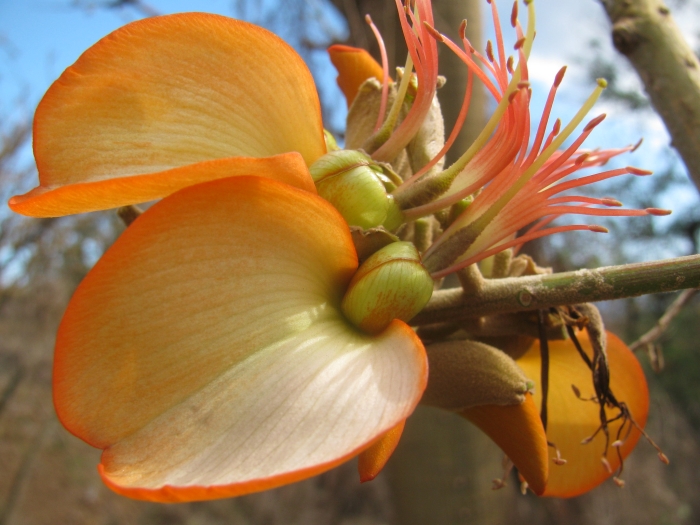Wiliwili
(Erythrina sandwicensis)
Wiliwili (Erythrina sandwicensis)
/
/

Forest and Kim Starr
CC BY 2.0
Image By:
Forest and Kim Starr
Recorded By:
Copyright:
CC BY 2.0
Copyright Notice:
Photo by: Forest and Kim Starr | License Type: CC BY 2.0 | License URL: https://creativecommons.org/licenses/by-sa/2.0/ | Uploader: Starr Environmental | Publisher: Flickr |































Estimated Native Range
Summary
Erythrina sandwicensis, commonly known as Wiliwili, is a deciduous tree native to the dry lowland forests and shrublands of the Hawaiian Islands. It typically grows to a height of 30-40 feet and a width of 20-30 feet. The Wiliwili is adapted to the dry season of its native habitat, becoming drought deciduous, shedding its leaves to conserve water. This usually occurs in late April or May, with trees in the wild losing their foliage before blooming. Trees in cultivation may keep some leaves during the flowering period. The flowers, appearing from April through July, are showy and can range in color from orange, yellow, salmon, greenish to whitish, with variations sometimes found within a single population. Bird pollination is common among erythrinas, and the Wiliwili is no exception. After flowering, pods develop and persist on the tree, with seeds remaining attached long after the pods have opened.
The Wiliwili is valued for its ornamental qualities, particularly its vibrant summer flowers. It has been used as a street tree in dry regions and as a windbreak in agricultural fields. In cultivation, it requires full sun exposure and can tolerate a range of water conditions and soil types, including those with varying drainage speeds. While it is relatively low-maintenance, it is important to note that the Wiliwili can be susceptible to gall wasp infestations, which can damage the tree. Despite this, its unique appearance and adaptability make it a cherished species in Hawaiian landscapes.CC BY-SA 4.0
The Wiliwili is valued for its ornamental qualities, particularly its vibrant summer flowers. It has been used as a street tree in dry regions and as a windbreak in agricultural fields. In cultivation, it requires full sun exposure and can tolerate a range of water conditions and soil types, including those with varying drainage speeds. While it is relatively low-maintenance, it is important to note that the Wiliwili can be susceptible to gall wasp infestations, which can damage the tree. Despite this, its unique appearance and adaptability make it a cherished species in Hawaiian landscapes.CC BY-SA 4.0
Plant Description
- Plant Type: Tree
- Height: 30-40 feet
- Width: 20-30 feet
- Growth Rate: Moderate
- Flower Color: Orange
- Flowering Season: Summer
- Leaf Retention: Deciduous
Growth Requirements
- Sun: Full Sun
- Water: Medium
- Drainage: Fast, Medium, Slow
Common Uses
Bee Garden, Bird Garden, Butterfly Garden, Drought Tolerant, Erosion Control, Hummingbird Garden, Low Maintenance, Showy Flowers
Natural Habitat
Dry lowland forests and shrublands
Other Names
Common Names: Wiliwili
Scientific Names: , Erythrina sandwicensis, Erythrina monosperma,
GBIF Accepted Name: Erythrina sandwicensis O.Deg.